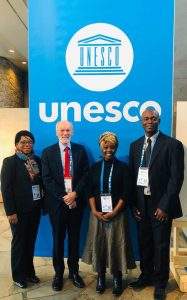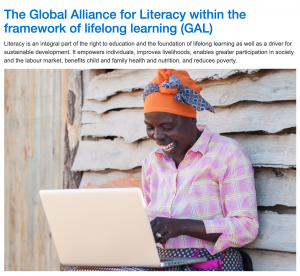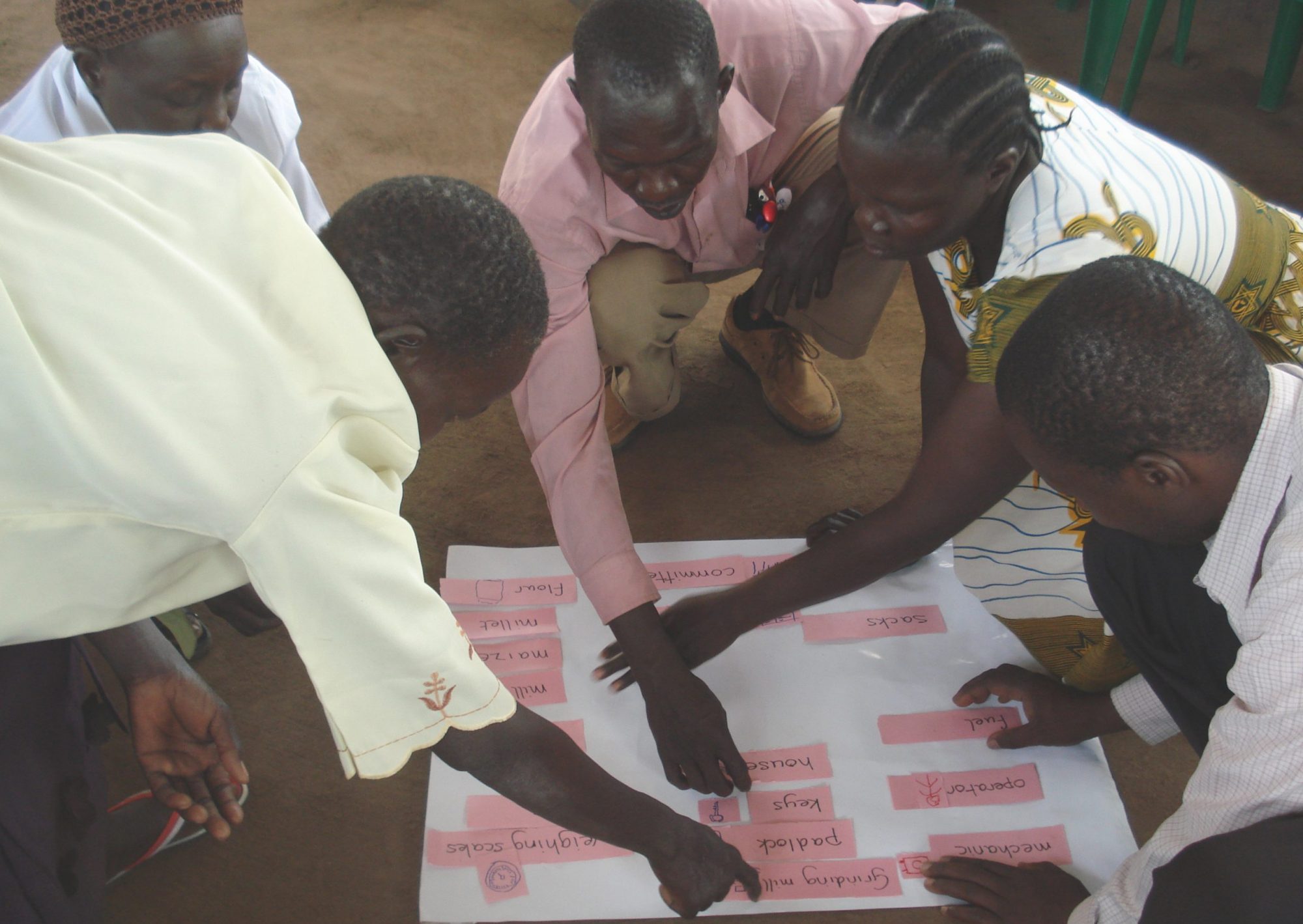Ian Cheffy
SIL International
How well have the countries with the most pressing literacy needs responded to the Covid-19 pandemic? What impact has the pandemic had on literacy and what are the likely implications for adult learning and education (ALE) in the years ahead?
These were some of the questions discussed at the latest online meeting of the Global Alliance for Literacy, a forum of 29 member states of UNESCO focusing on stimulating action on ALE, which I attended in October 2020. I represented SIL International and was invited to speak on the linkages between language, literacy and health. I pointed out how the effectiveness of messages around Covid-19 or any other health issue depends on them being communicated in the language which the intended audience knows best. SIL International is deeply committed to this and provides access to a collection of information on Covid-19 in over 1,000 less widely spoken languages on its website (www.sil.org).
Current issues

If ALE was identified in the Sustainable Development Goals as a key priority for development around the world in the coming years, with SDG4.6 seeking to ensure that by 2030 “all youth and a substantial proportion of adults achieve literacy and numeracy“, its vital role has now become all the more apparent given the widespread and multiple impacts of the pandemic. I was not surprised that UNESCO estimates that there will be a further increase in the percentage – and numbers – of non-literate youth and adults in countries where this is already unacceptably high. These are among the poorest countries in the world (see table below).
The need for ALE is going to increase. Because of the disruption to schooling everywhere, it is expected that many children and young people, especially in the poorest countries, will drop out of school altogether and that the majority of them will be girls. There will clearly be a greater need for ALE programmes to compensate for the lack of education of today’s young people. But will the necessary resources be there when needed?
In policy and provision, ALE often comes a poor second to formal education for children. It was not very encouraging to hear that only a quarter of the countries involved in the Global Alliance had included ALE in their initial Covid-19 educational response plans. Clearly even those countries which already recognise the literacy challenges they face need to do more to address the situation!
It is in order to draw attention to the value of ALE in national education provision that I and other colleagues in BALID are currently engaged in a research project funded by the British Association for International and Comparative Education (BAICE) exploring the impact of the pandemic on ALE provision and learners in Afghanistan, the Philippines and the UK, and the possible contribution of ALE to the post-pandemic recovery.
Looking ahead, much of the discussion in the Global Alliance meeting revolved around the potential of digital technologies to provide learning opportunities when face to face contact is not possible or indeed because of the advantage of this medium in facilitating engagement in learning, especially for those who cannot otherwise access it. But I was pleased to see that there was full recognition that this is no silver bullet, and not simply because the necessary infrastructure is lacking in many places and learners do not have the devices necessary to benefit. There is also the reality that many ALE facilitators themselves lack expertise with distance modes of learning and that training them in the necessary expertise will be an urgent priority, just as much as providing low-cost solutions to the technical challenges.
Once again, there was recognition of the value of education in the languages which the learners understand best, and not only because of the comments I made in my talk. Given the pressing need for ALE in the future, it is essential to respond in the most effective way with programmes that maximise the learning of the participants through using the languages that best convey meaning for them and through which they are most able to contribute to their own learning. But so often there is a yawning chasm between the acceptance of this in principle and the actual implementation in practice. I strongly hope that a positive outcome of the Covid-19 pandemic will be that educational authorities build more learning programmes around the languages that the learners actually speak. The impact will be obvious!
The Global Alliance for Literacy
By way of background, the Global Alliance for Literacy within the Framework of Lifelong Learning (its full title) was formed in 2016 in response to SDG 4.6. It specifically exists to promote action in the countries facing the most severe challenges in youth and adult literacy. It is managed by the UNESCO Institute for Lifelong Learning in Hamburg.

The Alliance consists of 20 countries where less than 50% of young people and adults are literate and
nine countries known as the E-9 group, identified by UNESCO as being priority countries in view of the large numbers of non-literate people in their populations, even if their literacy rates are above 50%. According to UNESCO, some 75% of the world’s non-literate youth and adults live in these 29 countries.
The members of the Alliance are:
- Countries with adult literacy rates below 50%: Benin, Burkina Faso, Comoros, Côte d’Ivoire, Central African Republic, Chad, Ethiopia, The Gambia, Guinea, Guinea-Bissau, Liberia, Mali, Mauritania, Niger, Senegal, Sierra Leone and South Sudan (Africa); Iraq (Arab States); Afghanistan (Asia and the Pacific), Haiti (Latin America and the Caribbean).
- E-9 countries: Nigeria (Africa), Egypt (Arab States), Bangladesh, China, India, Indonesia, Pakistan (Asia and the Pacific); Brazil, Mexico (Latin America and the Caribbean)
Africa remains a major focus of international attention for literacy, even if there are significant literacy needs in other countries with large non-literate populations elsewhere in the world.
Alongside the member states, the Global Alliance also includes 14 non-governmental Associate Members. Among them are the African Union, the International Council for Adult Education, the International Labour Organisation, the Southeast Asian Ministers of Education Organization, the UNHCR, and SIL International.
Conclusion
Even in 2015 when the Sustainable Development Goals were drawn up, youth and adult literacy was recognised as a challenge of daunting proportions. Now, the Covid-19 pandemic has only exacerbated the situation. I very much hope that the Global Alliance for Literacy will not only draw attention to this issue but also stimulate the action which is so desperately needed.
For further information, see https://uil.unesco.org/literacy/global-alliance
Ian Cheffy is an SIL International literacy and education consultant who has worked in the field of literacy in development for over 30 years. After 10 years working in Cameroon, supporting training programmes and literacy materials production in a number of local languages, he returned to the UK where he developed an accredited MA course in literacy. He represents SIL in networking contexts within the UK and internationally. He is particularly interested in the transformative effect of literacy in African contexts and how literacy can empower adults at the fundamentally important level of personal identity.

